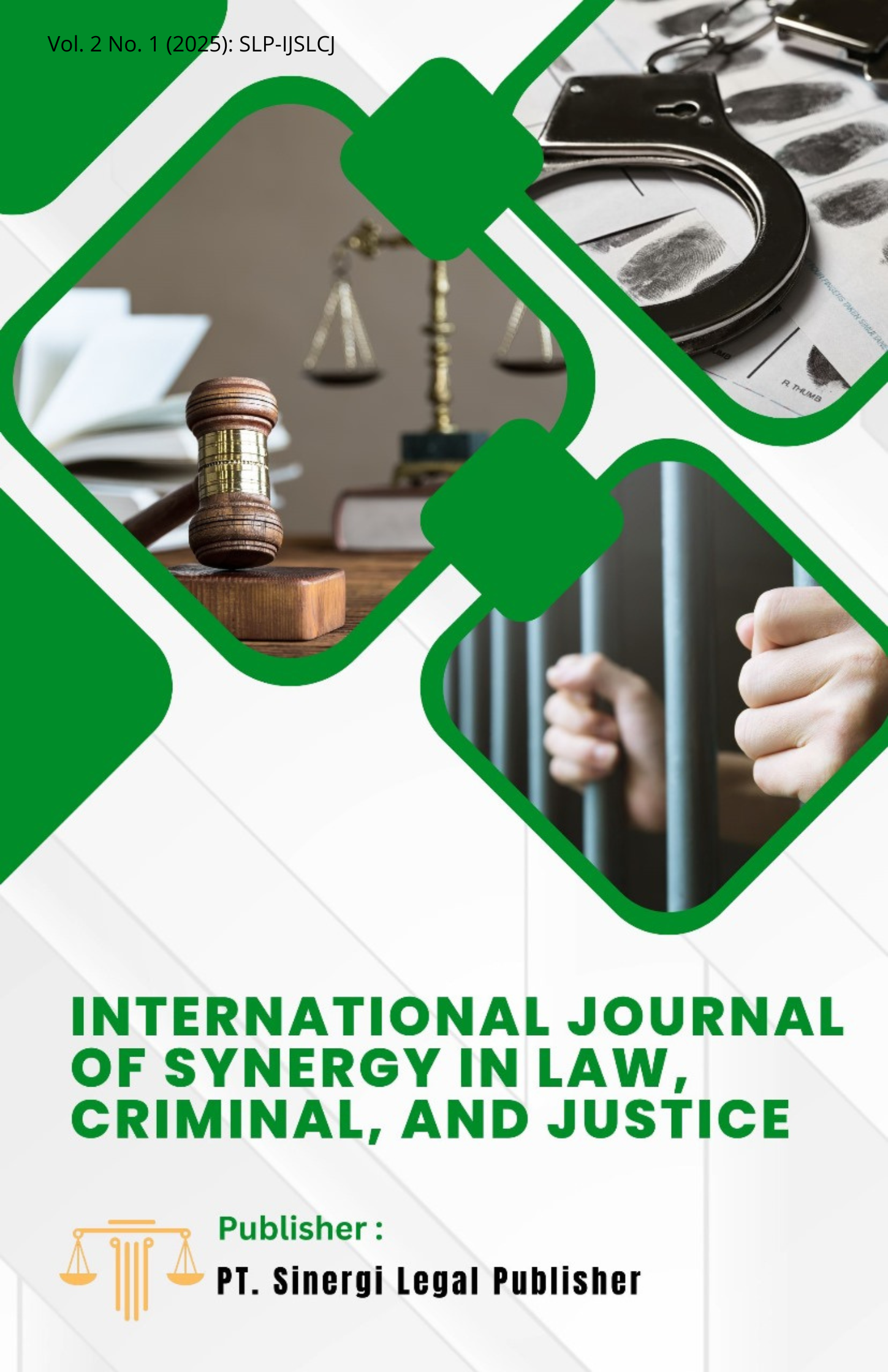PERSPECTIVE ON PROTECTION OF THE RIGHTS OF MINORS IN MARRIAGE DISPENSATION IN RELIGIOUS COURTS
DOI:
https://doi.org/10.70321/ijslcj.v2i1.85Keywords:
Marriage Dispensation, Child Protection, Marriage Law, Maqashid SyariahAbstract
Child marriage is still a serious problem in Indonesia even though the minimum age for marriage has been raised through Law Number 16 of 2019. One of the legal loopholes that allows child marriage to continue to occur is the marriage dispensation mechanism that can be submitted to the Religious Court for urgent reasons. In practice, almost all requests for marriage dispensation are granted, with the main reasons being pregnancy outside of marriage and social pressure. This shows that increasing the minimum age for marriage has not been fully effective in preventing child marriage.
This study uses a sociological legal approach with a qualitative descriptive method to analyze the legality of marriage dispensation for minors. The results of the study indicate that there is inconsistency in the application of marriage dispensation, where judges often grant requests without considering the child's physical, mental, and social readiness. In addition, there is a contradiction in the regulation, where the Child Protection Law requires parents to prevent child marriage, but on the other hand, the Marriage Law still provides an opportunity to apply for dispensation.
From an Islamic legal perspective, child marriage should not only be viewed from a formal legal aspect, but also consider the maqashid sharia, namely protection of the soul, mind, and descendants. Therefore, stricter legal reform is needed in granting marriage dispensation, including strengthening regulations, supervision of religious court decisions, and increasing public awareness of the negative impacts of child marriage. Thus, marriage dispensation must really be used as a last resort (ultimum remedium) in emergency conditions and not as a means to legalize child marriage, so that the protection of children's rights can be realized optimally.
Downloads
References
Ahmatnijar, Ahmatnijar. 2022. “Fulfillment of the Rights of Former Wives and Children After Divorce (Study at the Padangsidimpuan Religious Court).” Postgraduate Program, State Islamic University of North Sumatra.
Fitriani, Ifa Latifa. 2012. “Islam and Restorative Justice for Children in Conflict with the Law.” IN RIGHT: Journal of Religion and Human Rights 2 (1).
Lawalata, Jesylia Hillary, Juanrico Alfaromona Sumarezs Titahelu, and Julianus Edwin Latupeirissa. 2022. “Restorative Justice Approach in Resolving Narcotics Crime Cases at the Investigation Stage.” TATOHI: Journal of Legal Studies 2 (1): 91–112.
NURFADILLAH, NURFADILLAH. 2023. “SEXUAL VIOLENCE IN LAW NUMBER 12 OF 2022 CONCERNING CRIMINAL ACTS OF SEXUAL VIOLENCE.” State Islamic Institute (IAIN) Palopo.
Ramadhani, Nuraviva. 2023. “Child Neglect After Divorce According to Law Number 1 of 1974 Concerning Marriage.” Cessie: Scientific Journal of Law 2 (1): 22–33.
Saladin, Tomi. 2017. "Application of Mediation in Resolving Cases in Religious Courts." Court: Journal of Islamic Law Studies 2 (2).
Suadi, Amran. 2018. “The Role Of Religious Court In Women And Children Rights Protection Through Partial And Executable Decision.” Journal Of Law And Justice 7 (3): 353–74.
Suprayogi, Rizqi. 2023. “Islamic Marriage Law Reform in Indonesia.” Indonesia Journal of Business Law 2 (1): 29–37.
Syarifah, Umaiyatus. 2015. "The Role and Contribution of Nashiruddin Al-Albani (d. 1998) in the Development of Hadith Science." History 1 (1): 1–18.
Tanjung, Indra Utama. 2018. “Comparative Study of the Establishment of the Caliphate State in Indonesia.” Medan Religious Research Journal.
Tanjung, Indra Utama, and Dhiauddin Tanjung. 2022. “Law on Marriage and Interfaith Marriage: Islamic Law and Positive Law.” Journal of Citizenship 6 (4): 6792–6801.
Widyaningsih, Rindha. 2019. “Early Detection of Radicalism.” Purwokerto: Institute for Research and Community Service, Jenderal Soedirman University.
Yam, Jim Hoy. 2022. “Reflections on Mixed Methods Research.” EMPIRE 2 (2): 126–34.
Downloads
Published
How to Cite
Issue
Section
License
Copyright (c) 2025 Yanuar Hakim Nst , T.Riza Zarzani , Andoko

This work is licensed under a Creative Commons Attribution-ShareAlike 4.0 International License.














